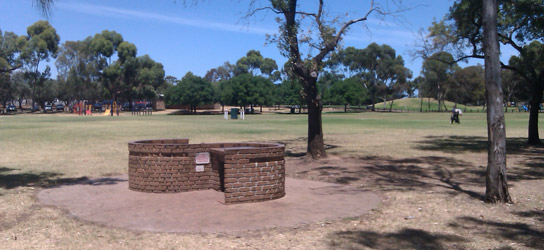I was recently reading the blog by Kevin Hoagland titled “Your Best Metal Detecting Critic”, and in it he mentioned "the path of least resistance". Being humans, this is the natural path we always take, but when detecting you should sometimes think the complete opposite! I thought this was a fantastic topic to explore further, as it really depends on whose path of least resistance you are referring to, and often the path of max resistance is the way to go! Here are a few scenarios to explain:
If you are out in a rich goldfield, with diggings, surface areas, shallow pits, dry-blowing heaps, tailing piles etc. it is fair to say that any gold left behind by the old timers could be pretty much anywhere. Now most of these goldfields have been gone over by many detector operators before you, so obviously having the latest technology and good technique can still help you find targets others have missed. But to really increase your chances, have you thought about looking where others haven’t? You should always ask yourself: "Where is the hardest spot to get to, and/or the most difficult spot to get a coil close to the ground?" A pile of fallen logs, some large rocks, a patch of thick scrub, prickly bush etc. are common areas in the goldfields where other prospectors conveniently walk around, leaving a potentially rich area for another detectorist. A slope of thick tussocks may prevent you from getting your coil close to the ground, so instead of walking away, get a small coil and get in between them, or get a big coil and just sweep over the top of them! Thick trash is another form of resistance, where the persistent operator is often rewarded. So next time you head to the goldfields, take a moment to absorb your surroundings and pick the path of Max resistance!

However, if you’re intending to search a big modern park looking for recently lost items, then you need to concentrate your search in areas where people are most likely to congregate. Picture a large multi-use park with running track, sports oval, playground, a patch of trees, car park, a kiosk etc. people will by nature follow the path of least resistance. People watching the local sporting game will find the nearest viewing area close to the carpark, and families going out for a picnic will generally pick the closest big tree or nice grassed area. Generally speaking, families aren’t going to hike up a hill, walk through prickle bush, and fend off snakes just to find a secret picnic spot, so by concentrating your efforts on the “likely” spots will often bring rewards. But what about older sites?
Older coin & relic sites can be similar to the goldfields, in two ways:
- The targets are not being replenished
- Historically rich areas are often now in the path of least resistance, due to roads, tracks, paths etc. and as such these are the sites that have been hit hardest by the modern detectorist.
In your research, you may uncover an old abandoned sports field, or an old market site, only to find that modern obstacles are now in your way. These obstacles could be anything that is preventing easy access to the site, such as: construction work, private property, big fences, a new mall, etc. Any such obstacles are enough to stop many operators in their tracks, and they turn away and look for greener (easier to access) pastures elsewhere. But those prepared to go the extra mile, do a bit of survey work, door knock and obtain permission etc. could quickly find themselves with a new detecting site full of targets ripe for the picking!
Have you ever taken the Path Of Maximum Resistance?
Nenad Lonic




















Comments